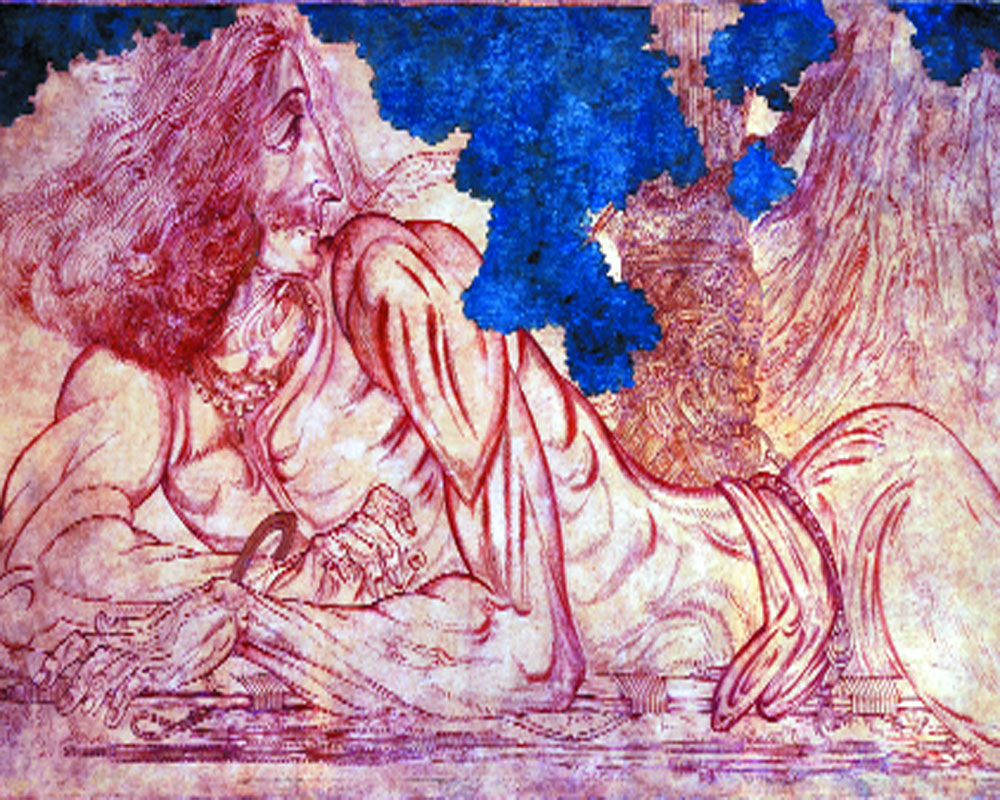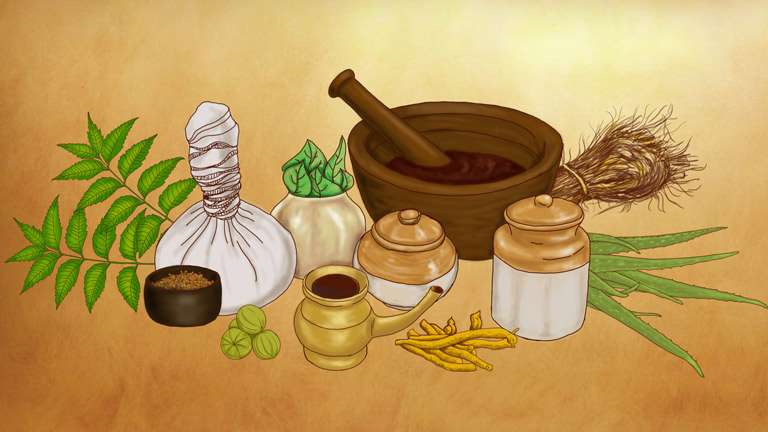The modernist mood is celebrated in many ways through the Asta Guru Modern Indian Art auction. It presents stellar works from various iconic artists. Francis Newton Souza’s Last Howl from the Cross, two works by Akbar Padamsee, a landscape by Ram Kumar, a fervent figurative from Jogen Chowdhury, and Nandalal Bose’s Arjuna are a few works that hold their own. Among sculptures, it is the venerated Himmat Shah’s sculpture that extols the modernist mood in myriad ways. All these stellar works, which are iconic in symbolism and the transcending trajectory of artistic evolutions, are being auctioned at the Asta Guru’s Modern Indian Art auction.
Nandalal Bose’s Arjuna
Nandalal Bose’s Arjuna, a magnificent tempera on silk, painted in 1944, is a national treasure and it is the first time it is being showcased to the public. It belongs to a freedom fighter and one of the pioneers of modern art in India. The painting was inspired by Tagore’s dance drama Chitrangada based on the Mahabharata. The painting shows a reclining Arjuna in the forest with an intriguing expression on his face. Historian R Siva Kumar says, “We never thought that the later version would ever be seen. We thought that the 1938 one at NGMA was the only one that we would see. Every piece of Nandalal Bose is a rare gem and bears the tag of a ‘national treasure.’
F N Souza’s Last Howl from the Cross 1963
Souza used to attend Mass with his grandmother every day and as a little boy he would watch the priests closely and be fascinated by the rituals of Catholicism including the crucifixion and the stained glass windows. But over the years his admiration also turned into deep criticism of the orthodoxy and the practices of the church and its many clergy. This work, Last Howl from the Cross 1963 was exhibited at the Grosvenor Gallery, London, in 1964 in a show titled The Human and the Divine Predicament, this canvas resembles Souza’s contentious 1959 painting, Crucifixion, which is currently part of the Tate’s permanent collection.
In this revolutionary piece, the iconic image of Christ’s crucifixion is rendered with malevolence rather than empathy. The gaunt martyr appears grotesque with his bared, fang-like teeth, vacant eyes and tangled, spiked hair. Like the figure they supposedly mourn, Souza has disfigured and distorted the men and women at the base of the cross, who appear to be heckling rather than grieving for the crucified figure. Thus, the mood set by the artist is one of revulsion rather than piety, recalling medieval scenes of heretics burning at the stake.
Akbar Padamsee’s Cityscape and Metascape
Akbar Padamsee’s Cityscape 1957 and his Metascape are two riveting works. Cityscape is a meditation on the beauty of nocturnes in myriad colours on line, form and movement. Painted from top to bottom, it has cubist geometry, it is also a meditation on the very act of painting. This early cityscape has only a few buildings at close range but in the vertical clusters of geometric shapes under a night sky, it is the shades of different dark colours and the work an incandescent aura. Padamsee’s Metascape too is a rare delight that conveys a restfulness, a depth and richness that is immediately striking. As the word Metascape suggests, in these paintings Padamsee is concerned with the mythic or archetypal landscape, which is expressed visually by a stringent ordering of timeless elements, such as the earth, the sun and the moon, in temporal space.
Jogen Chowdhury’s Dancer 1999
One artist who has always stood apart in figurative splendour is Jogen Chowdhury. His Dancer 1999 is a splendid creation in contours curves and cohesive beauty. Jogen has often included references to popular visual culture in his work and this is one of them. Over the period of 1970s onwards, he developed his own unique approach for the treatment of his subject. He drew inspiration from folk art sources, including Kalighats and Battala woodcuts. Jogen references local traditions and popular visual culture to comment on the complexities and contradictions of Bengali middle-class society. He combines fantasy with reality to produce subjects that are often grotesque, distorted and caricatures but they revel in the fluidity of finesse.
Jogen Chowdhury’s subjects are usually rendered against a black background, their fluid contours tightened with cross-hatching and heightened with touches of colour. The absence of a background allows the viewer to focus purely on the central character, evoking a sense of human alienation. His figures are woven into a shape with a spidery web of dense cross hatched lines, fleshed out with a hint of colour added with a soft dry pastel. “We did not have electricity in our houses and I had to read by the hurricane lantern. I had to fall back on black and white because we did not have enough light. We had a miserable state of living when we came to Kolkata as refugees. The criss-crossing lines, too, may be carrying traces of the environmental and mental complications of that time.”
Himmat Shah
Himmat Shah’s sculpture is a joy to behold. Spartan primal and deeply philosophical Himmat’s sculpture is a blend of the smoothened aesthetics of Brancusi and the cubist flavour of the yesteryear. Himmat has always admired both Brancusi and Henry Moore and created works that are born of modernist idioms. This work too belongs to the solitude that is Himmat’s own leitmotif. It has about it an aristocracy and a signature that harks back to early ages even as it speaks to us as a canticle of contemporary wisdom.
(The auction will begin from March 27 to March 28 in Mumbai.)
Writer: Uma Nair
Courtesy: The Pioneer








 OpinionExpress.In
OpinionExpress.In















Comments (0)